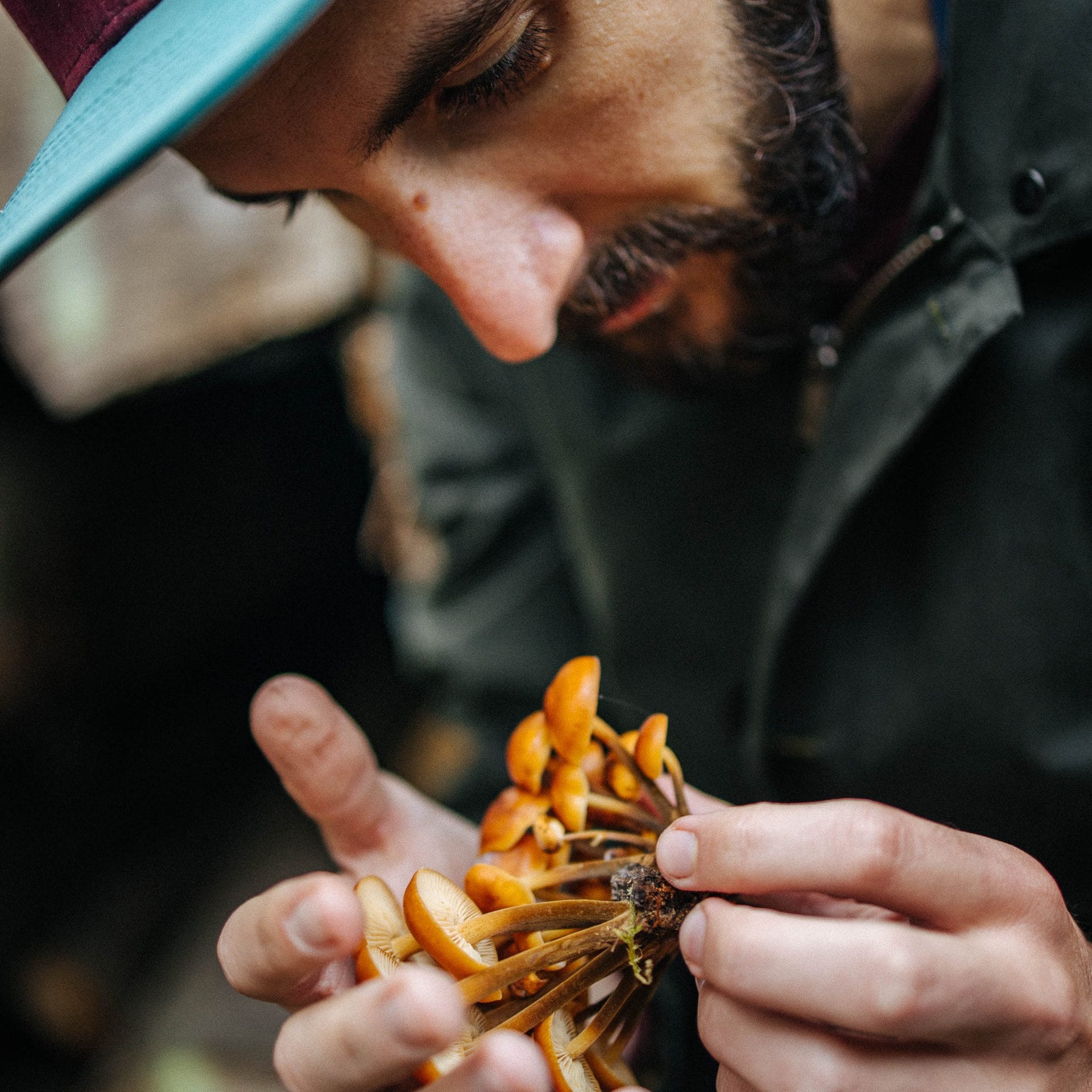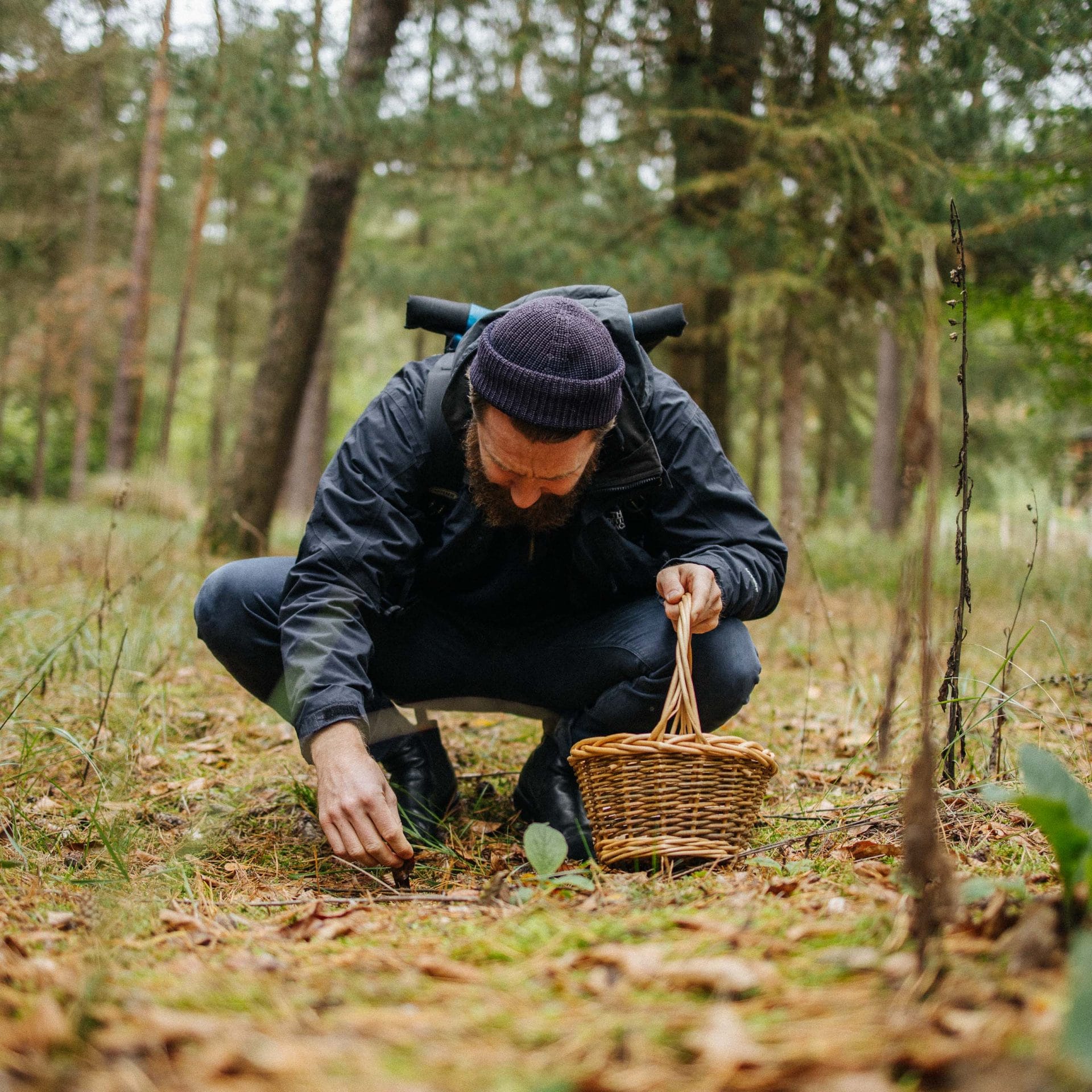Of tintlings, turnips and porlings
Mushrooms are not only an autumn classic for us, but one of the most fascinating creatures of all – mushrooms actually form their own realm among living things and may be more closely related to animals than to plants. But they are also a special food and, of course, a “future food”.

Some startups have implemented exciting projects to this end. Whether as a meat substitute – due to the unclear classification of mushrooms could be questioned whether they are really vegan or vegetarian – as food that can be grown anywhere in the sense of urban farming or as a component of food supplements – mushrooms obviously belong to the future.
Men alone in the forest
We wanted to approach the mystery of mushrooms in a very pragmatic way. To do this, we contacted mushroom expert Dietmar Krüger and met in the forest on the outskirts of Frankfurt to go searching.
Know what grows in the forest
In the process, we learned basic things about mushroom hunting. The environment essentially determines which mushrooms can be found there. Because mushrooms do not grow randomly distributed in the forest, they enter into relationships with their environment. They can be symbiotic partners or even pests and look for the right environment to form a so-called mycorrhiza with plants.
Based on the environment, e.g. the trees growing in a forest section, it is possible to limit which mushrooms can occur here at all. Also where exactly they grow e.g. whether on dead wood or a meadow limits, around which mushrooms it can concern.

If then a specimen is found it goes around a more exact determination, the first assumption. To do this, you should not simply rely on an app that can determine mushrooms on its own. It is important to assess the fungus by various characteristics. First, there would be the hat from above. At first glance, a rough classification can already be made, but this should also be confirmed when looking under the hat, on the lamellae or the sponge in the case of boletus. Style can be added as another characteristic.
A reliable classification can only be made if all areas correspond to the typical characteristics. The smell can also help in the assessment – but be careful, smelling good does not mean tasting good, even a good smelling mushroom can be poisonous.
Forest drug

Some mushrooms are not poisonous but not necessarily suitable for a mushroom pan. The birch porling, for example, has medicinal properties, is anti-inflammatory and antibiotic, it is said to help with stomach cramps and can be used for deworming. Ötzi possibly already had these mushrooms with him for this very reason. For this purpose, the mushroom is dried and taken as a bitter tea.
Fat booty
We learned a few things during our search and luckily we found them. In addition to meadow mushrooms and parasols, these were the birch porling, curly hen, tintlings (we did not eat these, as the mushroom is not undoubtedly non-toxic, it used to be used for making ink), Judas ear, velvet-footed ruffles and oyster mushrooms. We also saw beautiful toadstools, so we were not all alone .
The forest is full of mysterious creatures and some of them taste very good, you just have to be sure what you have in front of you, then nothing stands in the way of culinary experiments with self-gathered mushrooms.










